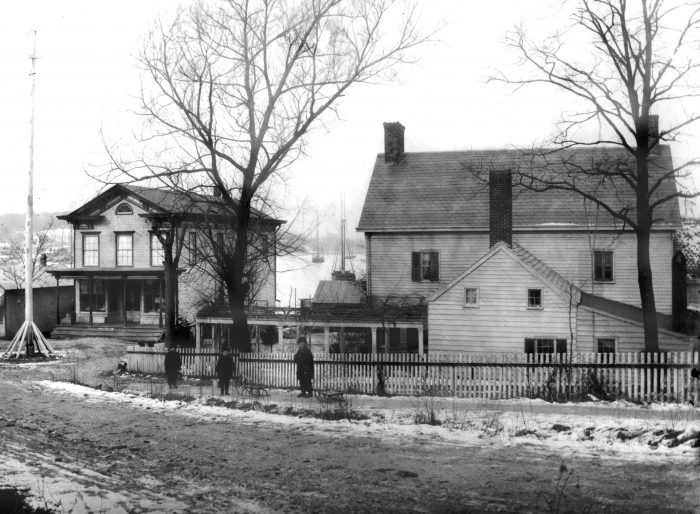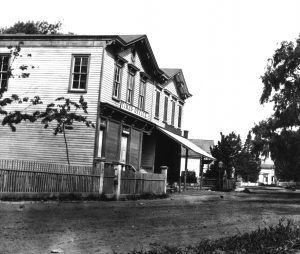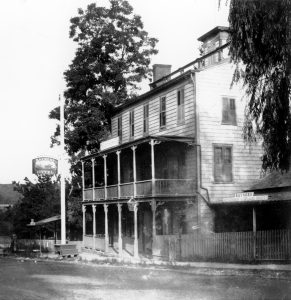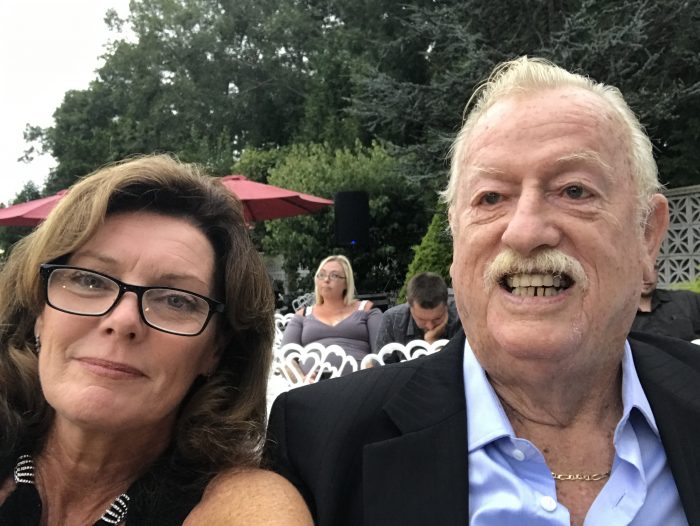Stanley Feltman of Coram, a 2019 TBR News Media Brookhaven Person of the Year and World War II veteran, died Sept. 23. He was 95.

Feltman was known to many as the veteran who sold poppies at the Middle Island Walmart to raise money for his fellow veterans. Often he would have a shopping cart filled with articles and wartime photos. Some days he would take a break from his regular location and collect money at the Walmart in Centereach or East Setauket.
In a 2019 TBR News Media interview, Feltman said he had met so many generous people through the years. He usually would collect between $80 and $100 after standing there for two hours. One day a gentleman shook his hand and noticed he was cold and bought him a jacket from the store. One woman gave him a $20 bill one day saying it was for him to keep.
“I took the $20, and when she left, I threw it in the pot,” he said. “I don’t need the money.”
A member of the Jewish War Veterans of the USA Col. Mickey Marcus Post 336, Feltman would bring the donations to the post’s monthly meetings where he and his fellow members decided where the money should go. Post Comdr. Norman Weitz said over a few years they have been able to donate more than $21,000 thanks to Feltman’s fundraising efforts. The post is a regular contributor to many veterans causes, including the Long Island State Veterans Home at Stony Brook University.
“My father was more proud of what he did with selling poppies for the veterans than anything he did in the war,” his son Richard said in a recent phone interview. “That was to him most important — selling poppies was his lifeline.”
His son said he and his brother Scott were proud of his father not only because he was a WW II vet but also because he gave back to other veterans.
“The fact that he was giving back to other veterans who might need help and providing them money to be able to give them things that they may have needed — especially those vets coming back from the War on Terrorism and not necessarily getting what World War II vets got when they returned — I couldn’t be happier with my father,” Richard Feltman said.
Stanley Feltman, who was born April 5, 1926, in Flatbush, Brooklyn, was a B-29 tail gunner and double ace in the U.S. Army Air Corps, which he joined after he graduated from high school in 1944. Feltman one time after being shot down had to escape on a raft. When a fellow soldier slipped off the raft into shark-infested waters, Feltman dove down to save him and grabbed him by the collar. Feltman earned the Bronze Star Medal for saving the man’s life. The medal wasn’t the only one earned during his service, as he gained more medals in total throughout his time in the Air Corps, even though they were no longer in his possession.
Richard Feltman said local elected officials helped the family reissue many of his father’s medals when he was inducted into the Four Chaplains Society in 2020 for the work he had done selling poppies.
During this time in the Army Air Corps, he became an amateur boxer. One day when he was being bullied by another soldier for being Jewish, he punched him. When a drill sergeant witnessed the fight and Feltman’s skill, he encouraged Feltman to take up boxing where he was undefeated. After his time in the service, Feltman went on to become a carpet salesperson.
In addition to raising money for veterans, Feltman participated in lectures at schools and senior groups, including Erasmus Hall High School where he attended while growing up in Brooklyn. He also was interviewed for the Library of Congress Veterans History Project, an initiative established to collect and preserve firsthand remembrances of wartime veterans.
Feltman was predeceased by his wife, Marilyn. He leaves behind his two sons Richard and Scott and five grandchildren. Funeral services were held Sept. 24 at New Montefiore Cemetery in West Babylon.






























